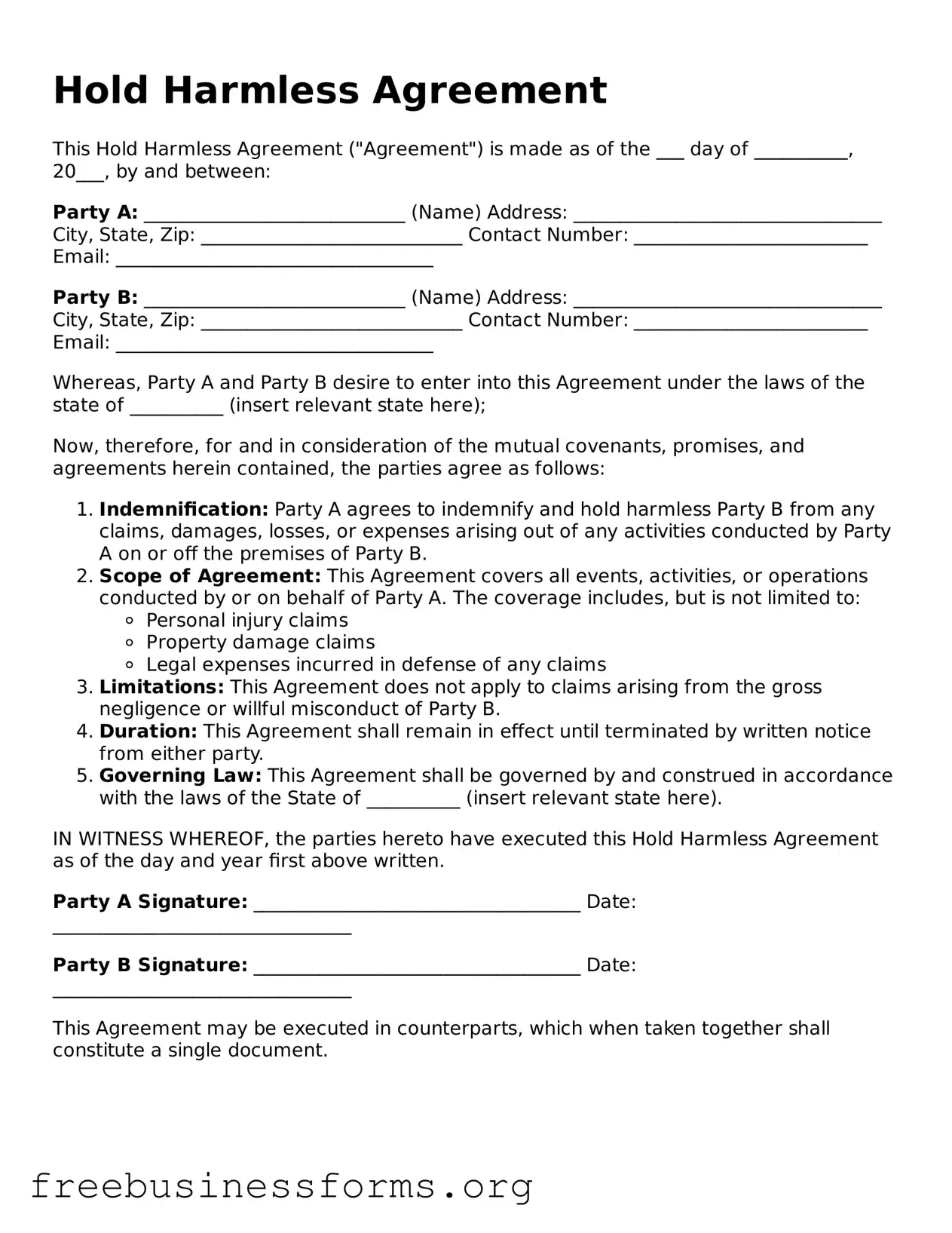Hold Harmless Agreement
This Hold Harmless Agreement ("Agreement") is made as of the ___ day of __________, 20___, by and between:
Party A: ____________________________ (Name)
Address: _________________________________
City, State, Zip: ____________________________
Contact Number: _________________________
Email: __________________________________
Party B: ____________________________ (Name)
Address: _________________________________
City, State, Zip: ____________________________
Contact Number: _________________________
Email: __________________________________
Whereas, Party A and Party B desire to enter into this Agreement under the laws of the state of __________ (insert relevant state here);
Now, therefore, for and in consideration of the mutual covenants, promises, and agreements herein contained, the parties agree as follows:
- Indemnification: Party A agrees to indemnify and hold harmless Party B from any claims, damages, losses, or expenses arising out of any activities conducted by Party A on or off the premises of Party B.
- Scope of Agreement: This Agreement covers all events, activities, or operations conducted by or on behalf of Party A. The coverage includes, but is not limited to:
- Personal injury claims
- Property damage claims
- Legal expenses incurred in defense of any claims
- Limitations: This Agreement does not apply to claims arising from the gross negligence or willful misconduct of Party B.
- Duration: This Agreement shall remain in effect until terminated by written notice from either party.
- Governing Law: This Agreement shall be governed by and construed in accordance with the laws of the State of __________ (insert relevant state here).
IN WITNESS WHEREOF, the parties hereto have executed this Hold Harmless Agreement as of the day and year first above written.
Party A Signature: ___________________________________
Date: ________________________________
Party B Signature: ___________________________________
Date: ________________________________
This Agreement may be executed in counterparts, which when taken together shall constitute a single document.
